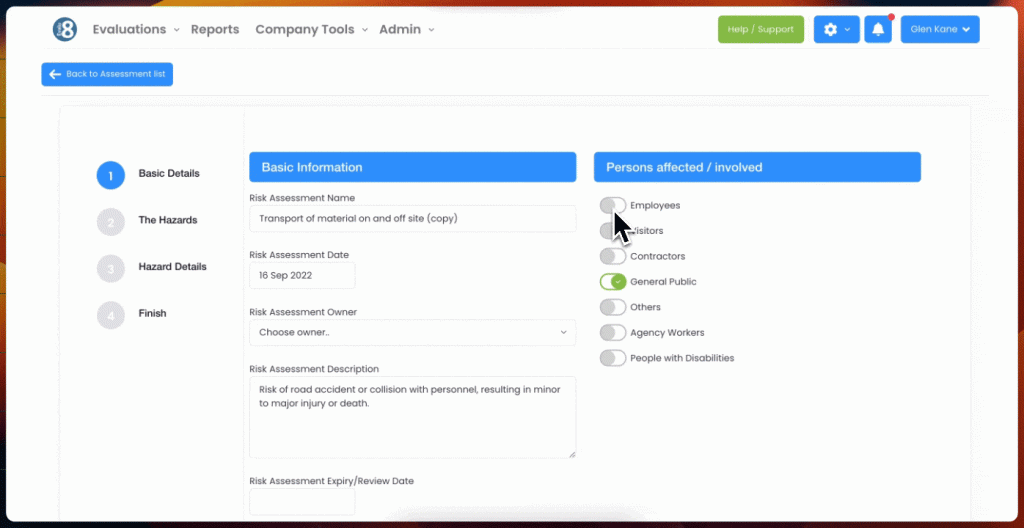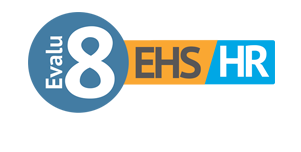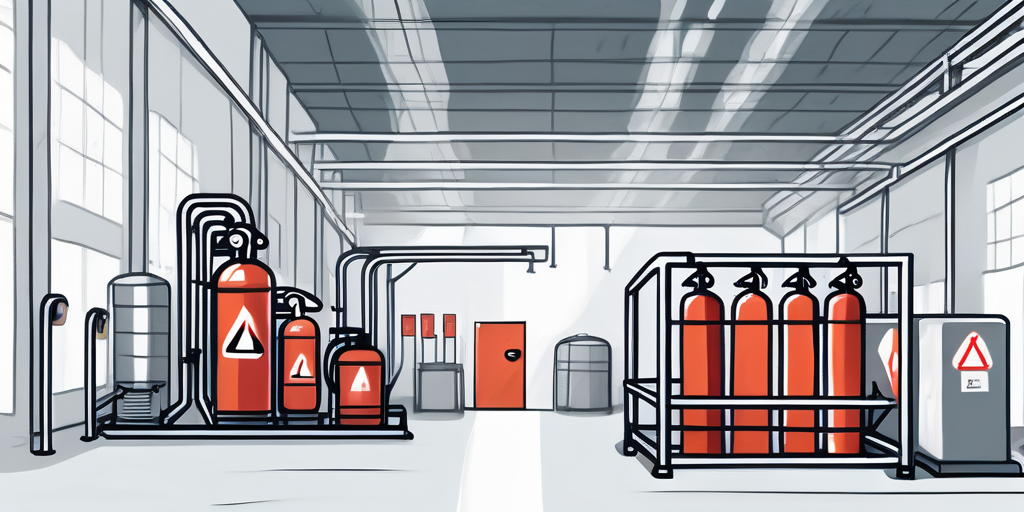The International Organisation for Standardisation (ISO) is a globally recognised body that develops and publishes international standards. These standards play a crucial role in ensuring quality, safety, and efficiency in various sectors, including manufacturing. For those working in the field of Environmental, Health, and Safety (EHS), understanding these standards is of paramount importance. This understanding not only helps to maintain a safe and productive work environment but also aids in compliance with legal requirements.
What are ISO Standards?
ISO standards are a set of guidelines and specifications designed to ensure that products, services, and systems are safe, reliable, and of good quality. These standards are developed by ISO’s member countries, which include over 160 nations worldwide. The standards cover a wide range of topics, from technology and safety to environmental management and social responsibility.
For the manufacturing sector, ISO standards provide a framework for best practices, helping to minimise the risk of accidents and improve overall performance. They also serve as a benchmark for companies to demonstrate their commitment to safety and quality to customers, regulators, and other stakeholders.
Key ISO Standards for Manufacturing Safety
There are several ISO standards that are particularly relevant to manufacturing safety. These include:
ISO 45001: Occupational Health and Safety
ISO 45001 is the international standard for occupational health and safety management systems. It provides a framework for organisations to identify, control, and decrease the risks associated with health and safety in the workplace. Implementing the standard can help organisations to improve employee safety, reduce workplace risks and create better, safer working conditions.
The standard is applicable to any organisation, regardless of its size or the nature of its work, and is compatible with other ISO management system standards, such as ISO 9001 (Quality Management) and ISO 14001 (Environmental Management).
How EHS software helps you with ISO 45001: Occupational Health and Safety
EHS (Environmental, Health, and Safety) software can significantly aid in the implementation and maintenance of ISO 45001: Occupational Health and Safety by providing a comprehensive platform to manage various aspects of health and safety protocols. Here are several ways EHS software can help:
1. Centralised Data Management: EHS software allows for centralized storage and management of all safety-related documents, records, and data, ensuring easy access and retrieval.
2. Risk Assessment and Management: The software facilitates systematic risk assessments by identifying hazards, evaluating risks, and implementing control measures. This aligns with ISO 45001’s requirement for proactive risk management.

3.Incident Reporting and Investigation: EHS software provides tools for reporting, tracking, and investigating workplace incidents, near misses, and hazards. This helps in maintaining accurate records and improving safety processes.
4.Compliance Tracking: It helps organizations stay compliant with ISO 45001 by tracking regulatory requirements and ensuring all legal and other obligations are met. The software can generate compliance reports and alerts for upcoming regulatory changes.
5.Training Management: EHS software can schedule, track, and document employee training and certifications, ensuring that all personnel are adequately trained and competent as per ISO 45001 standards.
6.Performance Monitoring and Reporting: The software offers real-time dashboards and reporting tools to monitor safety performance, analyze trends, and measure the effectiveness of the OH&S management system. This supports continuous improvement, a core principle of ISO 45001.
7.Document Control: It ensures that all documents related to health and safety, such as policies, procedures, and work instructions, are up-to-date, easily accessible, and properly controlled.
8.Audit Management: EHS software can manage internal and external audits, schedule audit activities, document findings, and track corrective actions, helping organizations maintain conformance to ISO 45001.
9.Corrective and Preventive Actions (CAPA): The software helps in identifying non-conformities, assigning corrective actions, tracking their completion, and verifying their effectiveness, thus supporting continual improvement.
10. Employee Engagement: EHS software can enhance employee engagement by providing platforms for feedback, suggestions, and participation in safety programs, which is crucial for fostering a safety culture as promoted by ISO 45001.
11. Workplace Inspections: It automates regular workplace inspections, ensuring they are carried out systematically and results are recorded and acted upon.
12. Emergency Preparedness: The software helps in planning, documenting, and communicating emergency procedures, ensuring readiness and compliance with ISO 45001’s emergency preparedness requirements.
By integrating these functionalities, EHS software supports organizations in achieving and maintaining compliance with ISO 45001, improving overall occupational health and safety performance, and fostering a proactive safety culture.
ISO 31000: Risk Management
ISO 31000 provides guidelines on managing risk faced by organisations. The application of these guidelines can be customised to any organisation and its context. ISO 31000 provides a universal approach to the process of risk management, which can be applied to different types of risks (financial, safety, project risks) and varied contexts.
It provides a clear and concise understanding of what constitutes good risk management practice. The standard does not provide certification but rather guides the development of an integrated risk management strategy.
Using Health and Safety Software to Comply with ISO 31000: Strengthening Risk Management Practices
Evalu-8 Health and safety software can play a crucial role in helping organizations comply with ISO 31000: Risk Management by providing tools and functionalities that enhance risk identification, assessment, and mitigation processes. Here are several ways health and safety software can assist:
1.Comprehensive Risk Assessment: Health and safety software facilitates thorough risk assessments by identifying potential hazards, evaluating risks, and prioritizing them based on their severity and likelihood. This aligns with ISO 31000’s framework for systematic risk management.
2. Centralised Risk Register: The software provides a centralized platform to record and manage all identified risks. This ensures that risk information is easily accessible, up-to-date, and can be analyzed effectively.
3.Incident Reporting and Analysis: The software enables efficient reporting and analysis of incidents, near misses, and accidents. This helps in identifying root causes and implementing corrective actions to prevent future occurrences.
4.Compliance Tracking: Health and safety software helps organizations stay compliant with relevant regulations and standards. It tracks compliance requirements, schedules audits, and generates compliance reports, ensuring alignment with ISO 31000.
5.Documentation and Record-Keeping: The software ensures that all risk management activities, including risk assessments, control measures, and incident reports, are documented and stored securely. This supports transparency and accountability.
6.Risk Mitigation Planning: Health and safety software aids in developing and implementing risk mitigation plans. It tracks the progress of risk mitigation actions and evaluates their effectiveness, ensuring continuous improvement.
7.Performance Metrics and Reporting: The software provides dashboards and reporting tools to monitor key performance indicators (KPIs) related to risk management. This helps in evaluating the effectiveness of risk management strategies and making informed decisions.
8.Training and Awareness: Health and safety software can manage and track training programs, ensuring that employees are educated about risk management practices and aware of their roles and responsibilities.
9.Audit Management: The software supports the planning, execution, and documentation of internal and external audits. It tracks audit findings and ensures that corrective actions are implemented effectively.
10.Policy and Procedure Management: Health and safety software helps create, manage, and update policies and procedures related to risk management. This ensures that all practices are in line with ISO 31000 guidelines.
By integrating these functionalities, health and safety software provides a robust framework for managing risks in accordance with ISO 31000, enhancing organizational resilience and ensuring a proactive approach to risk management.
Implementing ISO Standards
Implementing ISO standards in a manufacturing environment involves several key steps. These include:
Understanding the Standard
The first step in implementing an ISO standard is to thoroughly understand the standard and its requirements. This involves reviewing the standard, often with the assistance of a consultant or a member of the ISO committee. It’s crucial to understand not only the specific requirements of the standard but also its overall objectives and underlying principles.
Training is often necessary to ensure that all staff members understand the standard and their role in its implementation. This training can be provided in-house, or through external courses and seminars.
Developing a Plan
Once the standard is understood, the next step is to develop a plan for its implementation. This plan should outline the steps that will be taken to meet the standard’s requirements, including any necessary changes to processes, systems, or equipment. The plan should also include a timeline for implementation, and assign responsibilities for each task.
It’s important to involve staff at all levels in the planning process, as their input and buy-in can be crucial to successful implementation.
Implementing the Plan
The next step is to put the plan into action. This involves making the necessary changes to processes and systems, training staff, and monitoring progress. Regular audits should be conducted to ensure that the standard is being properly implemented and to identify any areas for improvement.
Once the standard has been fully implemented, it’s important to maintain it through regular reviews and continuous improvement. This will ensure that the organisation continues to meet the standard’s requirements and benefits from its use.
Benefits of ISO Standards in Manufacturing
Implementing ISO standards in manufacturing can bring a number of benefits. These include:
Improved Safety
By providing a framework for best practices in safety, ISO standards can help to reduce the risk of accidents and injuries in the workplace. This not only protects employees but can also reduce costs associated with accidents, such as workers’ compensation claims and downtime.
Increased Efficiency
ISO standards can also help to improve efficiency by streamlining processes and reducing waste. This can lead to cost savings and increased productivity.
Enhanced Reputation
Being certified to an ISO standard can enhance a company’s reputation, demonstrating its commitment to quality and safety. This can make the company more attractive to customers, suppliers, and potential employees.
Compliance with Legal Requirements
Many ISO standards are aligned with legal requirements, making compliance easier. In addition, certification to certain ISO standards can be a requirement for doing business in certain sectors or markets.
ISO standards play a vital role in ensuring safety and quality in the manufacturing sector. Understanding these standards and implementing them effectively can bring significant benefits, from improved safety and efficiency to enhanced reputation and compliance with legal requirements. For EHS professionals, a thorough understanding of ISO standards is not just a valuable skill, but a crucial part of their role in ensuring a safe and productive work environment.



